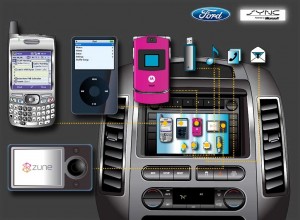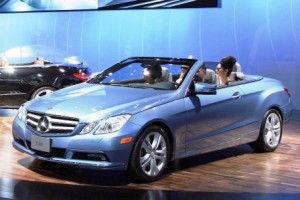Why is one car worth $15,000 and another $150,000?
Traditionally, the differentiators included such luxury touches as leather, chrome and, of course, more powerful engines. But these days, technology has become a hallmark of high-line brands.
Manufacturers like Mercedes-Benz have counted on costly systems, such as the automated collision avoidance system on the new E-Class, to draw affluent customers in and justify premium prices. But the technology gap is closing.
When the first anti-lock brake systems debuted, in the late 1980s, they carried a price tag of close to $2,000, and it took a decade for the technology to migrate into the mainstream. While the latest and greatest new systems may be equally expensive, at least initially, the prices quickly fall, these days, and adoption by mass-market brands can begin in as little as a year.
“You used to be able to create for yourself a niche for at least a few years,” Ernst Lieb, CEO of Mercedes-Benz US, told TheDetroitBureau.com during an interview. “Now, it’s down to a matter of months.”

Ford's Sync system depends on partnering with outside suppliers, but Mercedes is bringing high-tech development back in-house.
Mercedes isn’t the only maker experiencing the shift. With the debut of its all-new 2009 7-Series sedan, BMW introduced a radar-powered system that could watch out for oncoming traffic as a motorist backed out of a parking spot. ‘
Less than a year later, Ford Motor Co. introduced the same basic system on its redesigned Taurus sedan.
In fact, Ford’s new Fiesta subcompact, which hits showroom mid-year, will introduce a new version of the maker’s Sync infotainment system that could leave luxury brands scrambling to catch up.
Part of the problem is that automakers have pared back their so-called “core competencies,” in recent years. In plain English, that means they have shifted many tasks from in-house research labs to outside suppliers. And those vendors are rarely willing to give a customer a long-term exclusive. In fact, the basic technology behind Ford’s Sync is about to show up on Hyundai and Kia models.
“So, there’s a trend towards in-sourcing to try to get ourselves a little bit of advantage,” said Lieb, of Mercedes.
But other industry leaders warn that it will be difficult to impossible to significantly alter the trend towards relying on suppliers to develop much of the technology flooding into the automobile. If anything, some are moving even more rapidly into outsourcing. Ford, for example, will soon release a new version of Sync that encourages the use of outside “apps,” or services, much like the Apple iPhone.
So, going forward, it could prove even more difficult for luxury makers to gain and retain the differentiation they need to justify a premium price tag.


Point of order: Mercedes introduced the first Anti-Lock Braking system in the EARLY 1980’s (1979 in Europe).